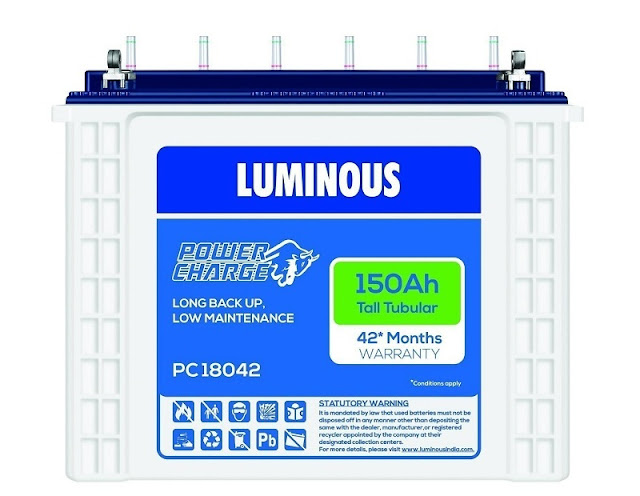Know about Important Facts and all Components of Solar Panels
A solar panel is a device installed on a rooftop, pole or ground to capture sunlight & convert it into electricity. It is basically a plate of cells which have a strong tendency to capture light. The cells work together and ensure the maximum amount of the available solar energy is captured and converted into electricity. The device is connected with a solar inverter battery system to store DC electricity and convert it into AC form to run electrical appliances.

What Are The Components Of A Solar Panel?
A solar panel as such looks a very simple device but its structure is very complex. A solar panel module comprises of solar cells, EVA, glass, a back sheet and a frame. And solar panels are of three types, monocrystalline, polycrystalline and thin film solar panels. Cells can be made of mono silicon, amorphous or polysilicon. The first two are manufactured more or less in a similar way.

How are Solar Panels Made?
The below given is the process of producing a crystalline type of solar panel.

Step 1: Sand
First of all, convert sand into high-grade silicon comes at a high cost. It involves an energy-intensive process.
Step 2: Ingots
The silicone is formed in the form of solid rocks which are melted together at a very high temperature to form ingots. Ingots are in the shape of a cylinder but you can convert them into any desired shape. All atoms are aligned with the desired structure. Boron is later added, which gives the silicone positive polarity.
Monocrystalline solar panel cells are produced from a single crystal of silicon. They have high efficiency in converting sun energy into solar power. Hence their price is higher.
Step 3: Wafers
The next step is the manufacturing of wafers. The ingot is sliced into very thin disks, called wafers. A wire is used for the precision cutting. The thinness of a wafer should be that of a paper. And anti reflective coating should be applied to reduce reflection from the shiny silicon surface.
Step 4: Solar Cells
The next phase is to convert a wafer into a real solar cell which is capable of converting solar energy into electricity. Metal conductors are added to wafers which give it grid-like matrix. The coating facilitates the absorption of sunlight, rather than reflecting it. A layer of phosphorous is diffused over wafers just to give it negative polarity. This way a positive-negative junction, is created which is essential for the proper function of a solar panel.
Step 5: Cell to Panel
The cells are joined together with the help of metal connectors. 48 cell panels are considered suitable for small homes. And 60-cell panels are the standard size. While as 72-cell panels are meant for large-scale installations. The front side is covered by glass and back by a durable material. Then a junction box is added to enable connections. Then the structure is assembled in a frame and glued by EVA to bind everything together.
How are Solar Panels Installed?

The installation of solar panels is done in seven phases. The phases are as given below:-
See here solar Installation video:-
See More at:



Comments
Post a Comment